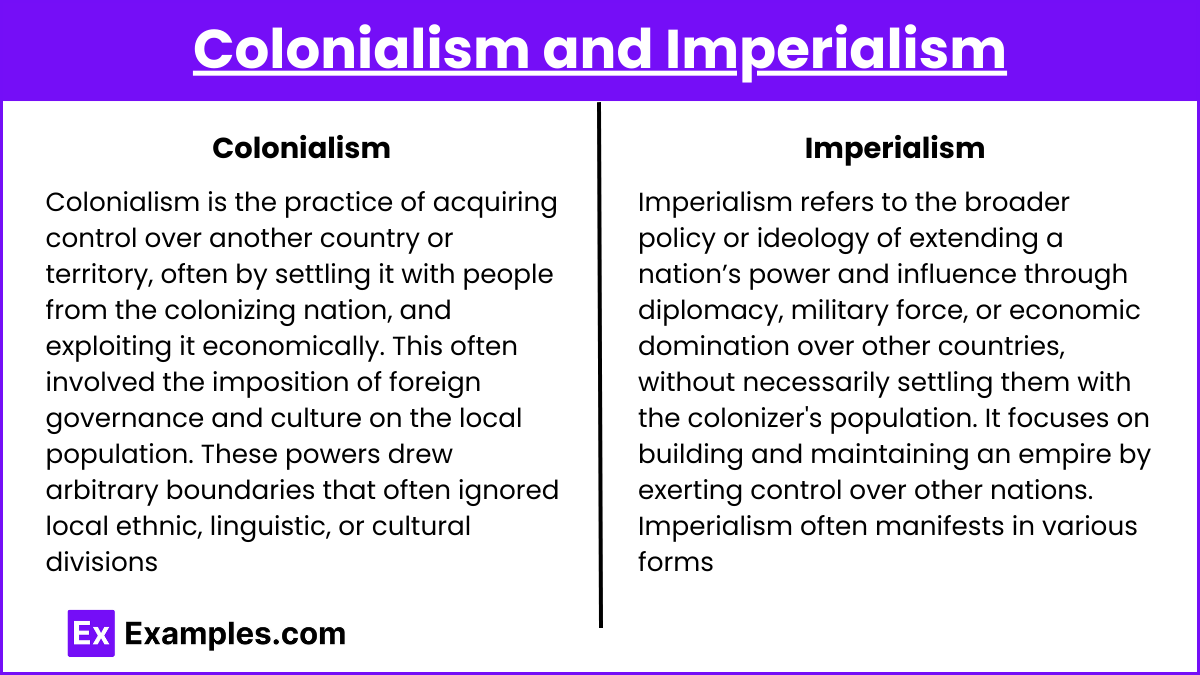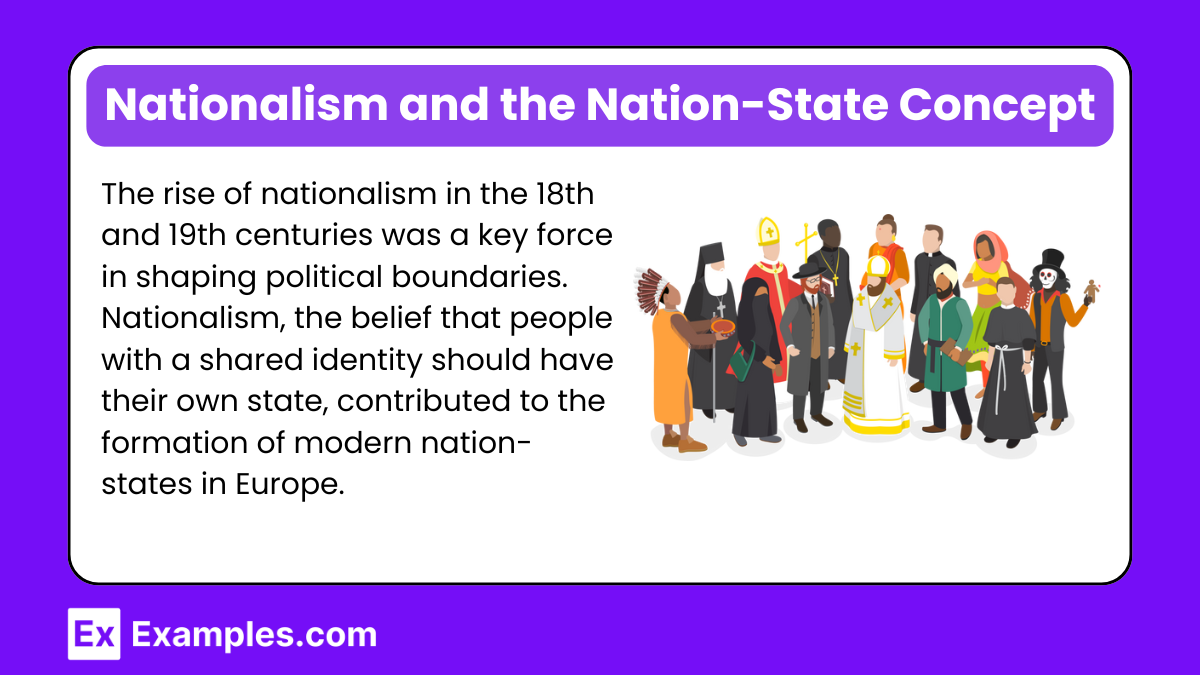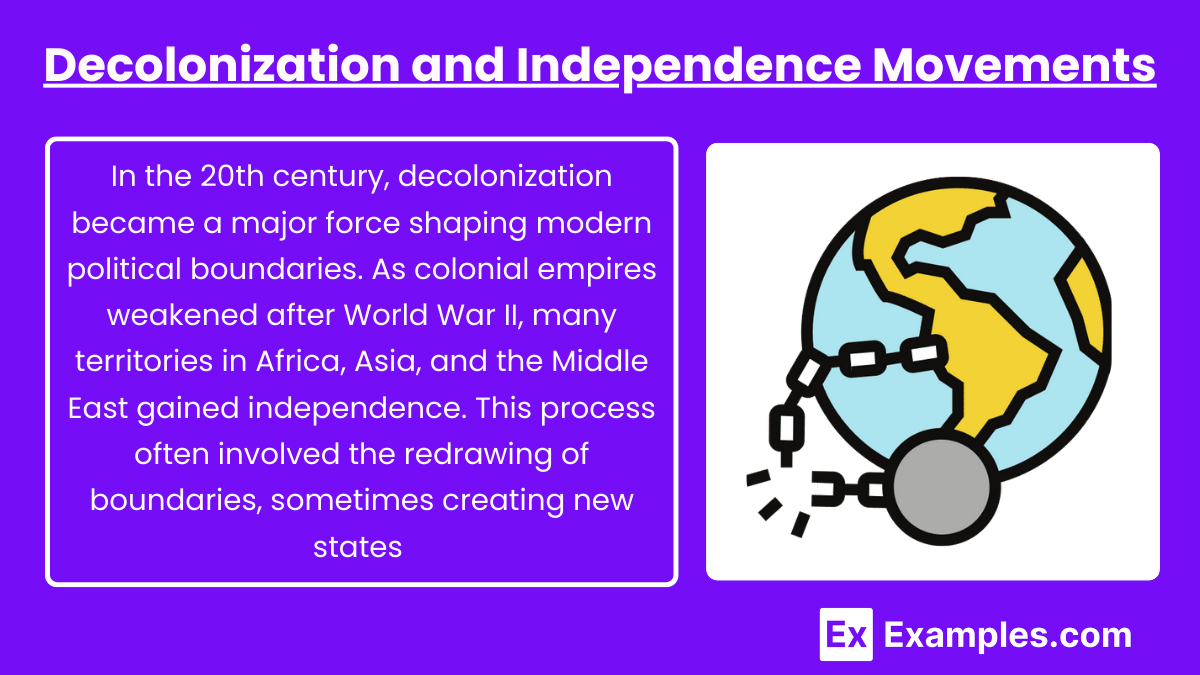The political boundaries of the modern world have been shaped by a combination of historical, social, and geopolitical forces, a central theme in AP Human Geography. Ideas such as nationalism, imperialism, and self-determination, along with events like wars, treaties, and decolonization, played a crucial role. Colonialism drew arbitrary borders, often ignoring ethnic and cultural divisions, while nationalism fueled the desire for independent states. Additionally, international agreements and conflicts further redefined borders. These forces continue to influence the political landscape, leaving a complex legacy of modern state boundaries.
Free AP Human Geography Practice Test
Learning Objectives
In studying "The ideas and forces that shaped the political boundaries of the modern world" for AP Human Geography, you should focus on understanding how historical forces like colonialism, nationalism, and imperialism contributed to boundary formation. Analyze the impact of wars, decolonization, and international treaties in shaping borders, and examine the role of ethnic, religious, and political conflicts in boundary disputes. Additionally, explore modern influences like globalization and supranationalism, and assess how these factors have influenced the stability and fluidity of political boundaries.
The political boundaries of the modern world are shaped by a complex mix of historical, geographical, social, and political forces. These boundaries have evolved over centuries, influenced by key ideas and events, such as imperialism, colonialism, nationalism, wars, diplomacy, and international agreements.
Colonialism and Imperialism

Colonialism is the practice of acquiring control over another country or territory, often by settling it with people from the colonizing nation, and exploiting it economically. This often involved the imposition of foreign governance and culture on the local population. These powers drew arbitrary boundaries that often ignored local ethnic, linguistic, or cultural divisions. Many of today’s boundaries, especially in Africa, are the direct result of colonial agreements, such as the Berlin Conference of 1884, which partitioned Africa among European powers.
Imperialism refers to the broader policy or ideology of extending a nation’s power and influence through diplomacy, military force, or economic domination over other countries, without necessarily settling them with the colonizer's population. It focuses on building and maintaining an empire by exerting control over other nations.Imperialism often manifests in various forms, including political, economic, and cultural domination, and can take both formal and informal control over a region or country. While formal imperialism might involve direct governance or military occupation, informal imperialism typically occurs through economic pressure, trade agreements, or cultural influence that allows the imperialist power to control resources or political decisions.
Nationalism and the Nation-State Concept

The rise of nationalism in the 18th and 19th centuries was a key force in shaping political boundaries. Nationalism, the belief that people with a shared identity should have their own state, contributed to the formation of modern nation-states in Europe. For example, the unification of Germany and Italy in the late 19th century was driven by nationalist movements. Nationalism also played a significant role in the dissolution of empires, such as the Ottoman and Austro-Hungarian empires, leading to the creation of new states based on ethnic or national lines.
The extraction of resources and exploitation of labor during the colonial period also contributed to the uneven development seen in many former colonies. Colonial powers established infrastructure, such as railroads and ports, to facilitate resource extraction, primarily benefiting the colonizers and leaving a legacy of economic dependency. This exploitation often created a class divide between the colonial elite and the indigenous populations, leading to long-lasting inequalities in wealth and power.
Decolonization and Independence Movements

In the 20th century, decolonization became a major force shaping modern political boundaries. As colonial empires weakened after World War II, many territories in Africa, Asia, and the Middle East gained independence. This process often involved the redrawing of boundaries, sometimes creating new states (e.g., India and Pakistan). However, the legacy of colonialism left behind contested borders, leading to conflicts, such as the Indo-Pakistani wars over Kashmir, and the Rwandan Genocide, fueled by ethnic tensions exacerbated by colonial boundary-making.
Geopolitics and the Cold War
The geopolitical struggle between the U.S. and the Soviet Union during the Cold War also influenced political boundaries. For instance, the division of Germany into East and West during the Cold War created a significant political boundary. Similarly, the Korean Peninsula was divided into North and South Korea, a boundary still in place today. Many conflicts during this period, such as the Vietnam War, were influenced by Cold War politics and led to changes in regional boundaries.
International Agreements and Diplomacy
Diplomacy and international agreements have also shaped political boundaries. Treaties such as the Treaty of Versailles (1919) redrew the map of Europe after World War I, leading to the dissolution of empires and the creation of new nations such as Poland and Yugoslavia. After World War II, the United Nations and other international bodies have played a role in resolving boundary disputes and legitimizing new borders through diplomacy and treaties.
Examples
Example 1: Colonialism and Imperialism
The partitioning of Africa by European powers during the Berlin Conference of 1884–1885 is a prime example of how colonialism shaped political boundaries. European nations like Britain, France, and Belgium carved Africa into colonies with little regard for existing ethnic or cultural divisions, leading to many of the modern political borders that exist today. These arbitrary borders have contributed to ongoing conflicts in post-colonial states due to the lack of alignment with the identities of indigenous groups.
Example 3: Nationalism
Nationalism was a driving force behind the unification of countries such as Germany and Italy in the 19th century. Nationalist movements sought to bring together people with common cultural, linguistic, and historical backgrounds into unified states. This desire for self-determination helped establish the nation-state as a key political unit in the modern world, creating boundaries based on shared national identities. Nationalism also played a major role in the breakup of multi-ethnic empires, such as the Austro-Hungarian Empire after World War I.
Example 4: Decolonization and Independence Movements
Following World War II, many colonies in Africa and Asia sought independence, leading to the redrawing of political boundaries. For instance, the independence of India in 1947 resulted in the creation of two separate nations, India and Pakistan, based on religious differences. The partition of British India into these two countries created lasting political and social consequences, including boundary disputes and mass migrations of people based on religious identities.
Example 4: The Cold War and Geopolitical Divisions
The division of Germany after World War II into East and West Germany is an example of how geopolitical forces during the Cold War shaped political boundaries. The boundary between the two states symbolized the ideological divide between communism and capitalism, which was also seen in other parts of the world, such as the division of Korea into North and South Korea. These political boundaries reflected the broader global competition for influence between the U.S. and the Soviet Union.
Example 5: Ethnic Conflicts and Fragmentation
Ethnic conflicts have significantly shaped political boundaries, especially in regions where diverse ethnic groups coexist. A key example is the breakup of Yugoslavia in the 1990s, where ethnic and religious tensions led to violent conflicts and the eventual formation of several new independent states, including Croatia, Bosnia and Herzegovina, and Serbia. The political boundaries that emerged from the dissolution of Yugoslavia reflected the deep ethnic and cultural divisions within the region, often exacerbated by historical grievances.
Multiple Choice Questions
Question 1
Which of the following events most directly contributed to the creation of new nation-states in Europe during the 19th century?
A) The Berlin Conference
B) The Cold War
C) The rise of nationalism
D) The Treaty of Versailles
Answer: C) The rise of nationalism
Explanation: The rise of nationalism in the 19th century was a key factor in the unification of states like Germany and Italy. Nationalism, the belief that people with a common culture, language, or history should govern themselves, spurred movements to consolidate fragmented regions into unified nation-states. For example, Italy and Germany were both unified during this time, reflecting the power of nationalist movements. Although the other options (Berlin Conference, Cold War, Treaty of Versailles) also shaped political boundaries, they pertain to different historical periods or contexts.
Question 2
What was the main outcome of the Berlin Conference of 1884-1885 in terms of shaping political boundaries?
A) The creation of the European Union
B) The partitioning of Africa among European colonial powers
C) The independence of African nations
D) The establishment of modern Middle Eastern borders
Answer: B) The partitioning of Africa among European colonial powers
Explanation: The Berlin Conference of 1884-1885 was held to regulate European colonization and trade in Africa during the period of New Imperialism. The main outcome was the division of Africa into territories controlled by European powers, such as Britain, France, Belgium, and Germany. The borders drawn at the conference largely ignored existing ethnic, cultural, and political divisions in Africa, leading to many of the boundary conflicts seen in the continent today. This event had no direct connection to the formation of the European Union, Middle Eastern borders, or the independence of African nations.
Question 3
Which of the following conflicts resulted in the realignment of political boundaries due to the collapse of a multinational state in the late 20th century?
A) The Vietnam War
B) The Korean War
C) The breakup of Yugoslavia
D) The partition of India and Pakistan
Answer: C) The breakup of Yugoslavia
Explanation: The breakup of Yugoslavia in the 1990s resulted in a series of conflicts and the eventual realignment of political boundaries as the country dissolved into several independent states, including Bosnia and Herzegovina, Croatia, Serbia, and Slovenia. This disintegration was driven by ethnic tensions and nationalist movements. In contrast, the Vietnam War and Korean War were conflicts influenced by Cold War politics, and the partition of India and Pakistan occurred earlier, in 1947, as a result of religious and political divisions in British India.


